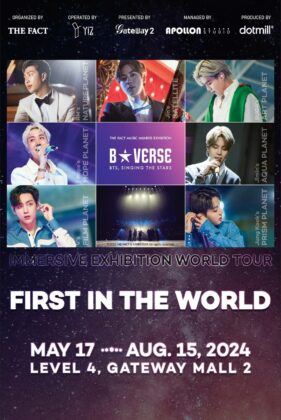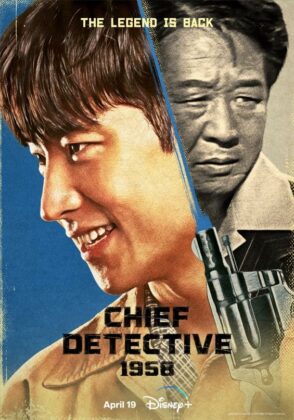Ensuring (regulating?) authentic sustainability
In the evolving landscape of global commerce, sustainability has emerged as a beacon of hope for consumers yearning for products that align with their environmental and ethical values. We are not an exception to this trend.
Like other countries and economies, the Philippines is witnessing a surge in sustainability claims adorning everything from household products to energy giants. Consumers, increasingly environmentally conscious, are drawn to these claims, hoping to make responsible choices. However, a lurking danger exists: greenwashing, the deceptive use of environmental assertions to mislead consumers. This deceptive practice erodes trust, hinders genuine progress, and unfairly disadvantages truly sustainable companies.
As the market floods with sustainability claims, discerning truth from hyperbole becomes increasingly challenging. This begs the question: who is the guardian against greenwashing? I believe this is where the Advertising Standards Council (ASC) of the Philippines steps in, playing a pivotal role in verifying the authenticity of these claims and safeguarding consumer trust.
UNDERSTANDING THE ASC’S MANDATE
The ASC is tasked with ensuring that advertising content is truthful, fair, and respectful of consumer rights. This mandate extends to sustainability claims, which have become a staple of modern marketing strategies. The council’s role in this context is to scrutinize these claims, ensuring they are not only accurate but also substantiated by verifiable evidence. This responsibility is critical in an era where greenwashing is a growing concern.
Sustainability claims can range from assertions about carbon neutrality and eco-friendly materials to commitments to social responsibility and ethical labor practices. These claims, while commendable when genuine, often present a verification challenge. The breadth of sustainability encompasses various dimensions — environmental, social, and governance (ESG) factors — each with its own set of metrics and benchmarks. The ASC’s challenge lies in developing a comprehensive framework that can accommodate the multifaceted nature of sustainability, enabling it to effectively evaluate the veracity of these claims.
GLOBAL LANDSCAPE: FROM SELF-REGULATION TO MANDATORY MEASURES
Across the globe, approaches to regulating sustainability claims vary considerably. Some regions rely on self-regulation and industry guidelines. The Consumer Goods Forum (CGF) offers voluntary principles, while the European Union’s Green Guides provide non-binding recommendations. While these efforts raise awareness and encourage better practices, their lack of enforcement leaves them vulnerable to exploitation. Companies can selectively apply elements of guidelines, creating a misleading picture without repercussions.
Other regions opt for stricter measures. Norway’s Marketing Act prohibits misleading environmental claims, while France mandates specific substantiation for terms like “recyclable” and “compostable.” The European Commission recently proposed a “Green Claims Directive,” demanding robust verification and standardized labeling.
These stricter systems offer greater consumer protection but raise concerns about administrative burden and stifling innovation. Businesses fear excessive complexity and the potential for hindering progress.
SOUTHEAST ASIA: NAVIGATING THE SUSTAINABILITY CONUNDRUM
Southeast Asia presents a unique landscape. Rapid economic growth intertwines with burgeoning environmental concerns.
While specific regulations are still evolving, various initiatives are underway. Singapore’s Green Label is voluntary, while Thailand offers life-cycle analysis-based certifications. Indonesia utilizes mandatory eco-labeling for certain products. These schemes promote awareness, but concerns remain regarding consistency and enforcement. The patchwork approach creates confusion for consumers and uneven playing fields for businesses.
Given experience and practices from around the world, here are some strategies that may be considered in verifying sustainability claims.
Standardization of Sustainability Metrics: One of the first steps the ASC can take is to collaborate with environmental experts and industry stakeholders to develop standardized metrics for sustainability claims. These standards would provide a clear benchmark for what constitutes a legitimate claim, facilitating easier verification and comparison across products and services.
Third-Party Certification Requirement: The ASC could mandate that any sustainability claim must be backed by certification from a recognized third-party organization. These organizations specialize in assessing the environmental and social impacts of companies, providing an objective measure of their sustainability practices. Requiring such certification would add a layer of credibility to sustainability claims, deterring companies from making unfounded assertions.
Transparent Disclosure Policies: The ASC can enforce policies requiring companies to disclose the methodologies and data supporting their sustainability claims. This transparency would allow for independent verification of claims and provide consumers with the information they need to make informed decisions. It would also encourage companies to adopt more rigorous and accountable sustainability practices.
Regular Monitoring and Compliance Checks: To ensure ongoing compliance, the ASC should implement a system for regular monitoring of sustainability claims. This could involve periodic reviews of companies’ sustainability practices and the evidence supporting their claims. Companies found to be in violation of ASC standards could face penalties, including the retraction of misleading advertisements and financial fines.
Consumer Education Programs: Beyond regulatory measures, the ASC can play a significant role in educating consumers about sustainability and the significance of verified claims. By empowering consumers with knowledge, the ASC can foster a more discerning market that demands authenticity and accountability from brands.
Furthermore, the effectiveness of the ASC’s strategies can be enhanced through the analysis of case studies and collaborative efforts with international bodies. Learning from the successes and challenges of similar regulatory bodies globally can provide valuable insights into best practices and innovative approaches to sustainability verification. Collaboration with international sustainability standards organizations can also help harmonize local efforts with global benchmarks, ensuring that Filipino consumers have access to products and services that meet internationally recognized sustainability criteria.
Indeed, the role of the Advertising Standards Council in verifying sustainability claims is both crucial and complex. As the guardian of advertising integrity in the Philippines, the ASC has the potential to significantly influence the market’s trajectory towards genuine sustainability. By implementing rigorous verification strategies, standardizing sustainability metrics, and fostering consumer education, the ASC can ensure that sustainability claims serve their intended purpose of guiding consumers towards environmentally friendly and socially responsible choices. In doing so, the ASC will not only protect consumer trust but also contribute to the broader societal shift towards sustainability.
While the ASC plays a crucial role, a comprehensive approach may require additional measures:
• Legislative Action: Consider enacting national legislation similar to Norway’s or the proposed EU Green Claims Directive for more robust enforcement.
• Industry Codes of Conduct: Encourage industry associations to develop and enforce self-regulatory codes with stronger penalties for greenwashing.
• Consumer Protection Agencies: Empower consumer protection agencies to investigate and sanction greenwashing practices alongside the ASC.
Sustainability claims hold immense potential to guide consumer choices and drive positive change. However, without effective safeguards, greenwashing thrives, hindering progress and misleading consumers. By adapting its approach, collaborating with stakeholders, and advocating for a multi-pronged strategy, the ASC can become a significant force against greenwashing in the Philippines.
Ultimately, protecting consumers and ensuring transparency in sustainability claims is a shared responsibility — the ASC, businesses, regulators, and consumers must work together to build a truly greener tomorrow.
Dr. Ron F. Jabal, APR, is the CEO of PAGEONE Group (www.pageonegroup.ph) and founder of Advocacy Partners Asia (www.advocacy.ph).



















